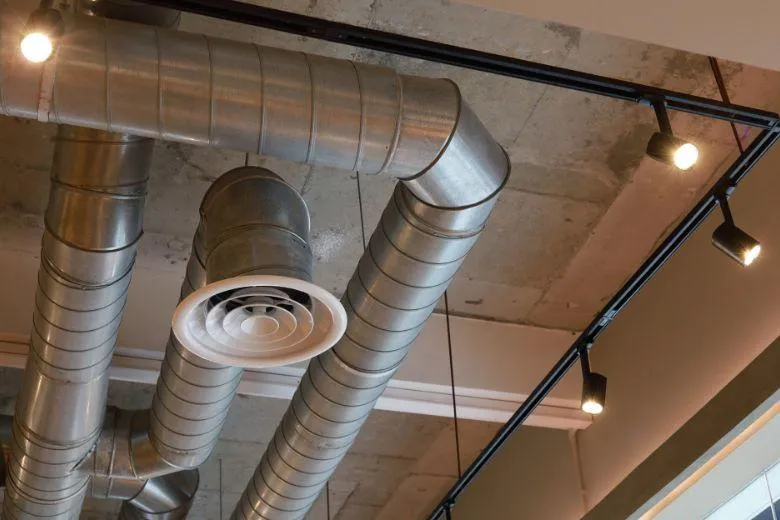
Improving Indoor Air Quality Without Blowing the Budget
Maintaining optimal indoor air quality (IAQ) is essential for occupant health, energy efficiency, and overall comfort in commercial buildings. Yet, the cost of implementing IAQ improvements often becomes a concern, especially for budget-conscious organizations. The good news? You can enhance indoor air quality without overspending by adopting smart strategies, integrated technologies, and proactive maintenance practices.
Why Indoor Air Quality Matters More Than Ever
With modern buildings becoming more energy-efficient and airtight, there's a growing need for effective ventilation, filtration, and environmental controls. Poor IAQ contributes to reduced employee productivity, increased absenteeism, and potential liability for facility managers. Moreover, regulatory agencies and occupants alike demand cleaner, healthier indoor environments, making IAQ a non-negotiable element of facility management.
Start With a Smart Building Automation System (BAS)
One of the most cost-effective ways to improve IAQ is by leveraging an intelligent building automation system (BAS). These systems, such as those offered by Elliott Controls, integrate HVAC, lighting, and energy management under one unified platform.
By using data analytics, IoT sensors, and real-time controls, a BAS helps:
Optimize airflow and ventilation based on occupancy
Reduce energy consumption by adjusting systems dynamically
Monitor pollutants and CO₂ levels in real-time
Improve occupant comfort while lowering operational costs
With these capabilities, you can maximize IAQ performance while minimizing manual oversight and energy waste.
Use Demand-Controlled Ventilation (DCV) to Cut Costs
Traditional ventilation systems often run at constant speeds, regardless of occupancy. This leads to over-ventilation, wasting energy, and increasing costs. A better approach is Demand-Controlled Ventilation (DCV), which adjusts ventilation rates based on real-time occupancy and CO₂ levels.
DCV provides:
Energy-efficient ventilation
Targeted air exchange where and when it’s needed
Lower HVAC operational costs
Extended equipment lifespan
Pairing DCV with intelligent controls ensures that IAQ levels remain optimal without the burden of excessive utility bills.
Upgrade Air Filters Without Replacing the Entire System
You don’t have to overhaul your entire HVAC system to improve air quality. One budget-friendly strategy is upgrading your air filters to higher Minimum Efficiency Reporting Value (MERV) ratings.
MERV 8-13 filters capture pollen, dust mites, mold spores, and even bacteria
High-efficiency filters improve IAQ without major equipment changes
Proper filter maintenance ensures maximum performance and airflow
To maintain energy efficiency, select filters that balance filtration capability with airflow resistance.
Implement Real-Time IAQ Monitoring Sensors
Installing IAQ sensors can transform your building's approach to air quality. These sensors provide real-time insights into various parameters such as:
Temperature
Humidity
Particulate matter (PM2.5)
Volatile Organic Compounds (VOCs)
Carbon dioxide (CO₂)
By monitoring these indicators, facility managers can make data-driven decisions and respond quickly to air quality issues. Many modern sensors integrate seamlessly into existing BAS platforms, eliminating the need for costly retrofits.
Focus on Preventive Maintenance for HVAC Systems
Preventive maintenance remains one of the most cost-effective methods to preserve both IAQ and energy efficiency. A proactive maintenance schedule includes:
Cleaning coils, ducts, and vents
Checking refrigerant levels and airflow
Inspecting dampers and exhaust fans
Replacing filters on schedule
Regular maintenance reduces the accumulation of contaminants and keeps HVAC systems running at peak performance. It also prevents unexpected repair costs and equipment failure.
Take Advantage of Natural Ventilation and Occupant Behavior
Sometimes, the best solutions are also the simplest. Encouraging natural ventilation and healthy occupant behaviors can greatly enhance indoor air quality at little or no cost.
Here’s how:
Open windows where feasible to introduce fresh air
Avoid blocking air supply vents
Use low-emission furnishings and cleaning products
Encourage indoor plants that improve air quality naturally
Educate staff on how their habits impact IAQ
These changes cost virtually nothing but contribute significantly to a healthier indoor environment.
Leverage Building Data for Continuous Optimization
With a connected BAS and real-time sensors, facilities gain access to building performance data that can be used for continuous optimization. AI-driven analytics allow you to:
Identify inefficiencies in air handling units
Predict equipment failures
Analyze occupancy trends
Fine-tune ventilation and filtration settings
Data-driven decisions enable long-term savings while maintaining top-tier indoor air quality.
Apply for IAQ Improvement Incentives and Rebates
Many utility companies and government agencies offer rebates, tax incentives, and grant programs for businesses that improve energy efficiency and air quality. These programs can significantly offset:
HVAC upgrades
BAS installation
IAQ monitoring systems
High-efficiency equipment
Always check with local energy providers and federal agencies to take full advantage of available programs.
Integrate IAQ into Your Building’s ESG Strategy
Incorporating IAQ improvements into your Environmental, Social, and Governance (ESG) goals positions your organization as a sustainable leader. Clean indoor air supports:
Employee health and productivity
Energy reduction goals
Corporate sustainability reporting
Long-term real estate value
Stakeholders and investors are placing greater importance on building wellness metrics, making IAQ investment both an operational and strategic priority .
Conclusion: Clean Air Doesn’t Have to Cost a Fortune
Improving indoor air quality doesn’t mean you need to break the bank. By leveraging smart technologies, implementing low-cost strategies, and focusing on preventive care, facilities can create healthier indoor environments while staying within budget.
From installing intelligent BAS systems to educating occupants and upgrading filters, the right combination of actions will lead to measurable improvements in IAQ and operational efficiency.
Cleaner air. Smarter systems. Lower costs. That’s a win for everyone.

